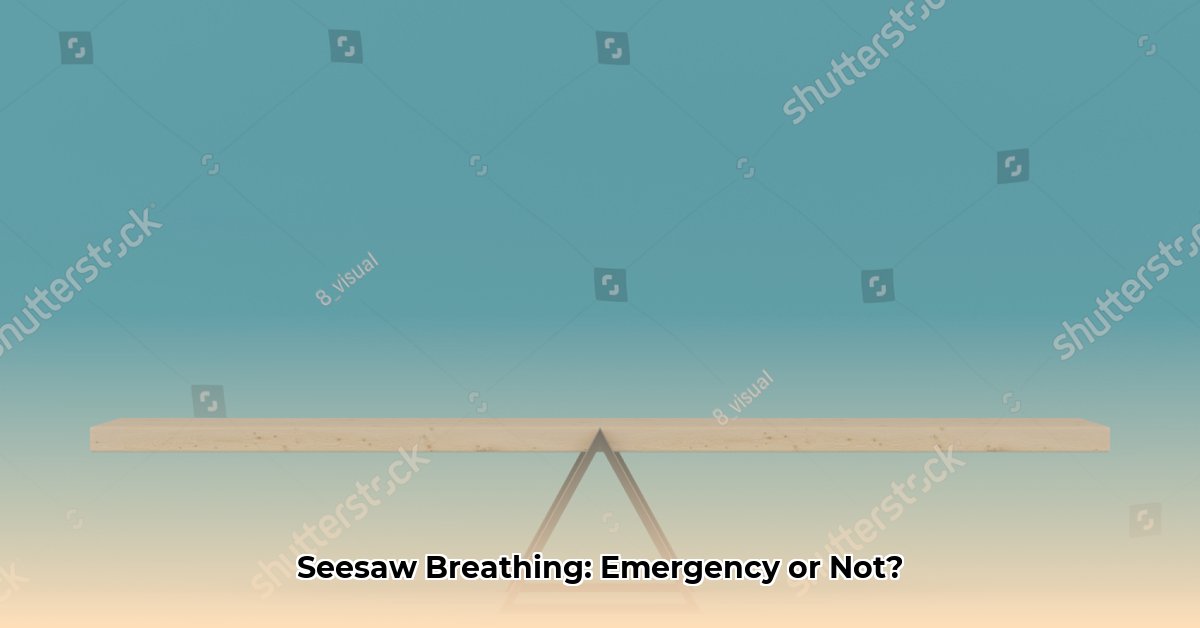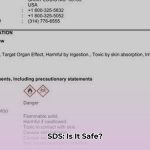Seesaw breathing, also known as paradoxical breathing, is a serious respiratory pattern where the chest and abdomen move in opposite directions during breathing. This guide provides essential information about recognizing seesaw breathing, understanding its causes, and knowing when to seek immediate medical attention.
What is Seesaw Breathing?
Seesaw breathing occurs when the chest contracts inward during inhalation while the abdomen expands outward. Upon exhalation, the chest expands while the abdomen contracts. This is the reverse of normal breathing, where the chest and abdomen rise together during inhalation. This unusual pattern disrupts the normal flow of air and can signify an underlying medical issue.
[Include a simple diagram illustrating normal breathing vs. seesaw breathing. The diagram should clearly depict the chest and abdomen movement in both scenarios.]
Why Does Seesaw Breathing Happen?
Several factors can contribute to seesaw breathing. Some of the most likely causes include:
Airway Obstruction
- Choking: A foreign object lodged in the airway can obstruct airflow, forcing the body to attempt compensation through seesaw breathing.
- Swelling: Allergic reactions or infections like croup can cause airway swelling, restricting airflow and potentially triggering seesaw breathing.
Chest Injuries
- Flail Chest: Multiple rib fractures can destabilize the chest wall, disrupting normal lung expansion and causing paradoxical movement.
- Pneumothorax: Air in the pleural cavity, the space around the lungs, can impair breathing and cause pressure changes that lead to seesaw breathing. This can occur spontaneously or due to trauma.
Neuromuscular Conditions
- Multiple Sclerosis (MS): This neurological condition can disrupt nerve signals to the respiratory muscles, affecting breathing coordination.
- Muscular Dystrophy (MD): This group of muscle diseases can weaken respiratory muscles, making it more difficult to breathe normally.
- Guillain-Barré Syndrome: This immune system disorder can also impair nerve signals to the respiratory muscles and affect breathing patterns.
- Spinal Cord Injury: Injuries, especially to the cervical area (C3-C5), can severely limit nerve impulses to the diaphragm, the primary muscle used in breathing. This may lead to paradoxical breathing or even respiratory paralysis.
- Amyotrophic Lateral Lateral Sclerosis (ALS): ALS, also known as Lou Gehrig’s disease, gradually weakens muscles, including those involved in breathing. This muscle weakness can contribute to ineffective breathing patterns and shortness of breath.
- Myasthenia Gravis: This autoimmune disease affects the neuromuscular junction, where nerves connect to muscles. It can lead to weakness in the respiratory muscles, making it difficult to breathe deeply and potentially contributing to abnormal breathing patterns.
Other Potential Factors
- Electrolyte Imbalances: Severe imbalances in minerals like potassium, magnesium, and calcium can affect muscle function, potentially contributing to respiratory issues.
- Hormonal Imbalances: Conditions like hypothyroidism can affect overall metabolism, leading to reduced muscle efficiency and impacting breathing.
- Lung Diseases: Chronic diseases like COPD (chronic obstructive pulmonary disease) and emphysema can cause air trapping in the lungs, leading to an overinflated chest and abnormal breathing patterns. Certain lung infections, like pneumonia, can also inflame air sacs and lead to fluid buildup, making it harder to breathe and possibly leading to paradoxical breathing.
- Central Sleep Apnea: This sleep disorder is characterized by pauses in breathing caused by the brain failing to send the proper signals to the muscles that control breathing. It occasionally exhibits paradoxical breathing patterns.
- Obesity: Excess weight, especially around the abdomen, can put pressure on the diaphragm, making it more difficult to expand the lungs fully for efficient breathing. This may contribute to irregular breathing patterns.
Recognizing Seesaw Breathing: Symptoms
The most noticeable symptom of seesaw breathing is the paradoxical movement of the chest and abdomen. However, additional signs often accompany this unusual breathing pattern:
- Shortness of breath (dyspnea): Feeling like you can’t get enough air.
- Rapid breathing (tachypnea): An increase in the number of breaths per minute.
- Retractions: The skin pulling in around the ribs or collarbone during inhalation.
- Nasal flaring: Widening of the nostrils with each breath.
- Grunting: Noisy breathing sounds, especially in infants.
- Cyanosis: A bluish tint to the skin, particularly around the lips and fingertips, indicating low oxygen levels.
When to Seek Immediate Medical Attention
Seesaw breathing in adults and older children is always a cause for concern. Seek immediate medical attention if you observe seesaw breathing accompanied by any of the following:
- Cyanosis
- Severe shortness of breath
- Difficulty speaking or forming words
- Chest pain
- Coughing up blood
- Altered mental status (confusion, lethargy)
- Loss of consciousness
What to Do in an Emergency
- Call 911 (or your local emergency number) immediately.
- Check for responsiveness. If the person is unconscious and not breathing, begin CPR if you are trained.
- If choking is suspected, perform the Heimlich maneuver (for adults and children over one year old) if you are trained.
- If the person is conscious but struggling to breathe, help them sit upright in a position that makes breathing easier.
- Provide information to emergency responders when they arrive, including observed symptoms, known medical history, and any events leading up to the breathing difficulty.
Underlying Conditions and Long-Term Management
Seesaw breathing is rarely a standalone condition. It usually suggests an underlying problem. Managing the root cause is crucial for long-term improvement. This might involve:
- Treating infections: Antibiotics for pneumonia, for instance.
- Managing chronic conditions: Medications, lifestyle changes, and respiratory therapies for COPD.
- Surgical intervention: For conditions like flail chest or pneumothorax.
- Respiratory support: Oxygen therapy or mechanical ventilation in severe cases.
Seesaw Breathing in Infants
In newborns and very young infants (typically under 2 to 3 years old), mild seesaw breathing can sometimes occur due to their developing respiratory systems. However, it is essential to differentiate normal variations from signs of respiratory distress. Seek immediate medical attention if your infant exhibits seesaw breathing alongside any of the following:
- Grunting
- Nasal flaring
- Retractions
- Cyanosis
- Rapid breathing
- Difficulty feeding
- Lethargy or unusual sleepiness
Frequently Asked Questions (FAQ)
- Is seesaw breathing always an emergency? While it can be a normal variation in some newborns, seesaw breathing in older children and adults always requires medical evaluation. It is often, but not always, a medical emergency depending on the associated symptoms.
- Can anxiety cause seesaw breathing? Anxiety can cause rapid breathing, but it typically doesn’t cause the paradoxical movement of seesaw breathing. However, if you experience unusual breathing patterns with anxiety, consult a healthcare professional to rule out other causes.
- What is the difference between seesaw breathing and paradoxical breathing? These terms are often used interchangeably to describe the same abnormal respiratory pattern.
- How is seesaw breathing diagnosed? Diagnosis usually involves a physical exam, observation of breathing patterns, and a review of medical history. Further tests, such as blood tests, chest X-rays, CT scans, or pulmonary function tests, may be necessary to identify the underlying cause.
Disclaimer: This information is for educational purposes only and does not constitute medical advice. Always consult a healthcare professional for diagnosis and treatment of any medical condition. Medical knowledge is constantly evolving, and further research may lead to new understandings and treatments for seesaw breathing.
- Hydro Extrusions USA Leads North American Aluminum Profile Solutions - December 28, 2025
- Hydro North America Leads Aluminum Extrusion Solutions Across Diverse Industries - December 27, 2025
- Hydro Extrusion North America Provides Custom Solutions Across Diverse - December 26, 2025
















